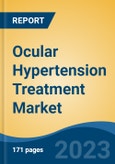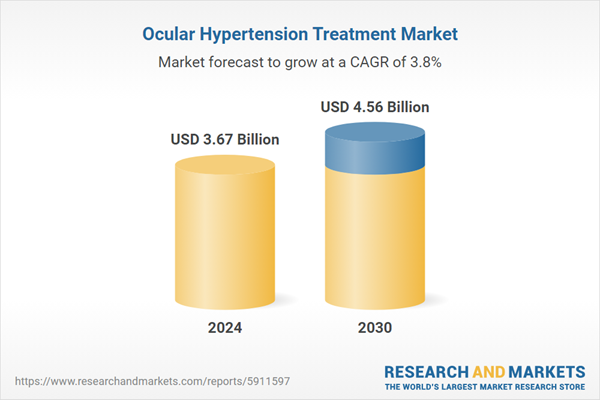Speak directly to the analyst to clarify any post sales queries you may have.
10% Free customizationThis report comes with 10% free customization, enabling you to add data that meets your specific business needs.
Key Market Drivers:
Aging Population
The growing aging population is a key driver of the expanding global ocular hypertension treatment market. As individuals age, they become more susceptible to ocular hypertension due to age-related changes in the eye’s drainage system, which can hinder the flow of aqueous humor and increase intraocular pressure. The World Health Organization forecasts that the global population aged 60 and older will more than double by 2050, reaching nearly 2.1 billion people.This demographic shift will result in a rise in the prevalence of ocular hypertension and glaucoma among the elderly, creating a larger patient base in need of treatment. As the population ages, there will be an increased demand for both pharmaceutical and surgical interventions, including minimally invasive procedures like Micro-Invasive Glaucoma Surgery (MIGS). These treatments offer less invasive and more efficient solutions for managing intraocular pressure. Consequently, the global ocular hypertension treatment market is positioned for steady growth, catering to the rising healthcare needs of older individuals and contributing to better vision preservation and reduced blindness rates.
Key Market Challenges:
Underdiagnosis and Lack of Awareness
Ocular hypertension is often a silent condition, with no obvious symptoms, making it challenging to detect early. Many individuals are unaware of the condition and its potential progression to glaucoma, which leads to a delay in diagnosis and intervention. This lack of awareness poses a significant barrier to market growth, as untreated ocular hypertension can advance to glaucoma, resulting in irreversible vision loss. Public ignorance about the importance of regular eye check-ups further complicates early detection efforts. Raising awareness about ocular hypertension and its connection to glaucoma is essential for capturing potential patients early, when treatments are most effective. Healthcare professionals, ophthalmologists, and public health campaigns must play a key role in educating individuals about the risks of ocular hypertension and the need for proactive eye care.Key Market Trends:
Minimally Invasive Surgical Techniques
Minimally invasive surgical techniques are transforming the treatment landscape for ocular hypertension. Traditionally, managing elevated intraocular pressure involved more invasive surgeries, often with longer recovery times and higher risks. However, the development of Micro-Invasive Glaucoma Surgery (MIGS) has introduced a less invasive approach that reduces surgical trauma while targeting the underlying causes of elevated intraocular pressure. MIGS has numerous benefits for both patients and healthcare providers, including shorter recovery periods, lower complication rates, and improved patient outcomes. The growing adoption of MIGS is expected to continue driving the ocular hypertension treatment market, providing a shift toward more efficient and patient-friendly treatment options.Key Market Players:
- Angelini Spa
- Laboratorios Sophia
- Neurim Pharmaceuticals Ltd
- Nicox SA
- Novartis AG
- Aerie Pharmaceuticals, Inc.
- AbbVie, Inc.
- Angelini Pharma S.p.a.
- Chong Kun Dang Pharmaceutical Corp
- Lee Pharma Ltd
Report Scope:
This report segments the global ocular hypertension treatment market into various categories and provides a detailed analysis of trends:
By Type:
- Intraocular Hypertension
- Glaucoma
By Route of Administration:
- Oral
- Parenteral
- Other
By Distribution Channel:
- Retail Pharmacy
- Online Pharmacy
- Other
By Region:
North America:
United States, Canada, MexicoEurope:
France, United Kingdom, Italy, Germany, SpainAsia-Pacific:
China, India, Japan, Australia, South KoreaSouth America:
Brazil, Argentina, ColombiaMiddle East & Africa:
South Africa, Saudi Arabia, UAECompetitive Landscape:
This section provides a comprehensive analysis and profiling of major companies operating in the global ocular hypertension treatment market.Available Customizations:
TechSci Research offers tailored customization options for this market report, allowing adjustments to meet specific company needs. Customization options include detailed analysis and profiling of up to five additional market players.This product will be delivered within 1-3 business days.
Table of Contents
Companies Mentioned
- Angelini Spa
- Laboratorios Sophia
- Neurim Pharmaceuticals Ltd
- Nicox SA
- Novartis AG.
- Aerie Pharmaceuticals, Inc.
- Abbvie, Inc
- Angelini Pharma S.p.a.
- Chong Kun Dang pharmaceutical Corp
- Lee Pharma Ltd
Table Information
| Report Attribute | Details |
|---|---|
| No. of Pages | 185 |
| Published | March 2025 |
| Forecast Period | 2024 - 2030 |
| Estimated Market Value ( USD | $ 3.67 Billion |
| Forecasted Market Value ( USD | $ 4.56 Billion |
| Compound Annual Growth Rate | 3.8% |
| Regions Covered | Global |
| No. of Companies Mentioned | 10 |









